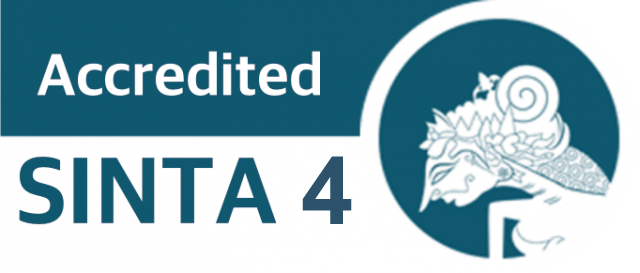Comparison of the Effects of a Combination of Centella asiatica and Mentha piperita Leaf Extracts on the Number of Normal Brain Cells in Male Mice (Mus musculus)
DOI:
10.29303/jpm.v20i6.9998Published:
2025-10-01Issue:
Vol. 20 No. 6 (2025)Keywords:
Centella asiatica; Hippocampus; Mentha piperita; Normal Neurons; StressArticles
Downloads
How to Cite
Downloads
Metrics
Abstract
Chronic stress is known to cause neuronal damage in the hippocampus, particularly in the CA1 and CA3 areas, which play a crucial role in memory and learning. One way to prevent this damage is by using natural ingredients with neuroprotective properties. This study aimed to compare the effects of Centella asiatica and Mentha piperita leaf extracts, either singly or in combination, on the number of normal neurons in the hippocampus of male mice exposed to stress. Twenty-five male mice were divided into five treatment groups: K− (control without treatment), K+ (stress without extract), P1 (stress + Centella asiatica extract), P2 (stress + Mentha piperita extract), and P3 (stress + combination of Centella asiatica and Mentha piperita). Stress was induced using a restraint stress method, while the extracts were administered orally at the prescribed dosage. After the treatment period, the hippocampus was removed, and histological slides were prepared with Hematoxylin-Eosin staining to count the number of normal neurons in the CA1 and CA3 areas. The results showed that the K+ group experienced a significant decrease in the number of normal neurons compared to the K− group. Administration of gotu kola (P1) and mint (P2) extracts increased the number of neurons compared to K+, but not to the same extent as K−. The combination of Centella asiatica and Mentha piperita extracts (P3) showed the most optimal effect, with the number of normal neurons approaching that of the negative control group. These findings indicate that the combination of Centella asiatica and Mentha piperita has synergistic potential in protecting hippocampal neurons from stress-induced damage. Further research is needed to explore the molecular mechanisms underlying this neuroprotective effect.
References
Z. Firdaus, D. Kumar, S. K. Singh, and T. D. Singh, “Centella asiatica alleviates AlCl₃ induced cognitive impairment, oxidative stress, and neurodegeneration by modulating cholinergic activity and oxidative burden in rat brain,” Biological Trace Element Research, vol. 200, no. 12, pp. 5115–5126, 2022, doi: 10.1007/s12011-021-03083-5.
N. E. Gray, J. A. Zweig, M. D. Martin, J. Y. Zhu, J. F. Quinn, and A. Soumyanath, “Centella asiatica increases hippocampal synaptic density and improves memory and executive function in aged mice,” Brain and Behavior, vol. 8, no. 7, e01024, 2018, doi: 10.1002/brb3.1024.
R. Wahyuni, S. Suriwahyuni, A. H. Saif, and M. Silitonga, “Centella asiatica: Alzheimer’s Neuroprotective,” International Journal of Ecophysiology, vol. 7, no. 1, pp. 38–47, 2025, doi: 10.32734/ijoep.v7i1.19423.
A. A. I. M. Padmiswari, N. T. Wulansari, and K. B. Harditya, “The Administration of a Combined Extract of Gotu Kola (Centella asiatica) and Peppermint (Mentha piperita) Leaves on the Brain Cell Count of Stressed Male Mice (Mus musculus),” Jurnal Pijar Mipa, vol. 20, no. 3, pp. 457–461, 2025, doi: 10.29303/jpm.v20i3.8843.
M. M. Pisar, B. J. Chee, I. Long, and A. Osman, “Protective effects of Centella asiatica extract on spatial memory and learning deficits in animal model of systemic inflammation induced by lipopolysaccharide,” Annals of Medicine, vol. 55, no. 1, p. 2224970, 2023, doi: 10.1080/07853890.2023.2224970.
M. A. Khairinisa, M. Alfaqeeh, and V. M. Patricia, “Effects of Centella asiatica (L.) Urb. on Cognitive Function in Hypothyroid Mice Offspring,” Pharmacology and Clinical Pharmacy Research, vol. 8, no. 2, pp. 93–101, 2023, doi: 10.15416/pcpr.v8i2.48162.
A. I. M. Padmiswari, N. T. Wulansari, and P. Indrayoni, “Antioxidant activity test of combination of Centella asiatica leaf extract and mint leaf extract as an alternative herbal drink,” Jurnal Pijar Mipa, vol. 18, no. 1, pp. 126–129, 2023, doi: 10.29303/jpm.v18i1.4520.
M. A. Nasution, N. Gultom, and M. Silitonga, “Literatur Review: Kajian Tanaman Obat Untuk Mengatasi Penyakit Sistem Saraf Pusat di Indonesia,” Symbiotic: Journal of Biological Education and Science, vol. 6, no. 1, pp. 32–44, 2025, doi: 10.32939/symbiotic.v6i1.167.
M. Nardian and D. S. Mulyana, “Efektivitas Pemberian Ekstrak Daun Mint dan Tekhnik Relaksasi Nafas Dalam terhadap Tingkat Nyeri Menstruasi,” Jurnal Ilmiah Permas: Jurnal Ilmiah STIKES Kendal, vol. 14, no. 3, pp. 1189–1194, 2024, doi: 10.32583/pskm.v14i3.2126.
D. M. Hanafy, P. D. Prenzler, G. E. Burrows, S. Gurusinghe, B. M. Thejer, H. K. Obied, and R. A. Hill, “Neuroprotective activity of Mentha species on hydrogen peroxide-induced apoptosis in SH-SY5Y cells,” Nutrients, vol. 12, no. 5, p. 1366, 2020, doi: 10.3390/nu12051366.
S. D. Sawu, W. Wibowo, and F. E. O. Irawan, “Aktivitas Analgesik Topikal Gel Ekstrak Etanol 70% Daun Mint (Mentha piperita) pada Mencit Putih (Mus musculus) dengan Metode Hot Plate,” Jurnal Ilmiah Medicamento, vol. 11, no. 1, pp. 48–57, 2025, doi: 10.36733/medicamento.v11i1.9900.
G.-H. Lee, K. Kim, and W. Jo, “Stress evaluation of mouse husbandry environments for improving laboratory animal welfare,” Animals, vol. 13, no. 2, p. 249, 2023, doi: 10.3390/ani13020249.
X. Li, Y. Zhang, and J. Wang, “Chronic stress-induced hippocampal neuronal damage: Mechanisms and therapeutic strategies,” Frontiers in Neuroscience, vol. 17, p. 1112345, 2023, doi: 10.3389/fnins.2023.1112345.
C. Rowe, R. Skeen, and D. Kennedy, “Centella asiatica (Gotu Kola) extract enhances dendritic complexity and protects hippocampal neurons from oxidative stress,” Phytotherapy Research, vol. 38, no. 2, pp. 512–523, 2024, doi: 10.1002/ptr.8091.
J. Woo, H. Park, and J. Kim, “Stress-induced hippocampal neurodegeneration: The role of glucocorticoids and oxidative stress,” Molecular Neurobiology, vol. 55, no. 5, pp. 3495–3506, 2018, doi: 10.1007/s12035-017-0573-2.
V. A. Rosyidi, D. C. Sari, and R. Utami, “Antioxidant and neuroprotective potential of Centella asiatica in stress-induced cognitive impairment,” Journal of Herbal Medicine, vol. 42, p. 101014, 2024, doi: 10.1016/j.hermed.2024.101014.
D. M. Hanafy, “Mentha piperita protects against stress-induced memory deficits through modulation of BDNF and oxidative stress pathways,” Journal of Ethnopharmacology, vol. 256, p. 112782, 2020, doi: 10.1016/j.jep.2020.112782.
N. Al-Tawarah, S. Al-Sarayreh, and A. Al-Fraihat, “Neuroprotective effects of Mentha piperita extract against oxidative stress-induced cognitive impairment in rats,” Neuroscience Letters, vol. 805, p. 137201, 2023, doi: 10.1016/j.neulet.2023.137201.
M. Shoaib, U. Saleem, and S. Raza, “Synergistic neuroprotective effects of polyphenols and triterpenoids: Implications for herbal combinations in stress-induced neuronal damage,” Frontiers in Pharmacology, vol. 14, p. 1223456, 2023, doi: 10.3389/fphar.2023.1223456.
S. R. Siregar, T. Widyawati, and M. Ichwan, “Potensi Gotu kola (Centella asiatica) terhadap Fungsi Kognitif Lanjut Usia,” AVERROUS: Jurnal Kedokteran dan Kesehatan Malikussaleh, vol. 9, no. 1, pp. 94–108, 2023, doi: 10.29103/averrous.v9i1.10772.
S. M. Desiana, S. Susianti, and A. J. Wulan, “Pengaruh Pemberian Vitamin C Terhadap Jumlah Sel Piramidal Lapisan CA1 Hippocampus Tikus Putih (Rattus norvegicus) Jantan Galur Sprague dawley Yang Diinduksi Monosodium Glutamat (MSG),” Medical Profession Journal of Lampung, vol. 13, no. 5, pp. 816–826, 2023, doi: 10.53089/medula.v13i5.608.
A. A. I. M. Padmiswari, N. T. Wulansari, K. B. Harditya, and S. D. Megayanti, “Antioxidant Activity Test of Salak Bali Peel Extract (Salacca zalacca var. amboinensis) Against Brain Cells of Male Mice (Mus musculus L.) Induced by Alloxan,” Jurnal Pijar Mipa, vol. 20, no. 1, pp. 35–39, 2025, doi: 10.29303/jpm.v20i1.8146.
V. Buranasudja, P. Thongdeeying, and J. Wattanathorn, “Neuroprotective effect of Centella asiatica on memory impairment and neuronal degeneration in animal models,” Evidence-Based Complementary and Alternative Medicine, vol. 2021, p. 5594823, 2021, doi: 10.1155/2021/5594823.
S. R. Pakadang, D. Karim, and T. Ahmad, “Meracik Herbal Pilihan Untuk Pencegahan Dan Komplementer Pengobatan Tuberkulosis,” Jurnal Pengabdian Kefarmasian, vol. 2, no. 1, 2021, doi: 10.32382/jpk.v2i1.2207.
I. W. A. Sudarma, “Potensi Aktivitas Neuroprotektif Senyawa Fitokimia dalam Markisa (Passiflora edulis) sebagai Pencegah Penyakit Alzheimer,” in Proc. Workshop dan Seminar Nasional Farmasi, vol. 3, pp. 339–351, 2024, doi: 10.24843/WSNF.2024.v03.p33
Author Biographies
Anak Agung Istri Mas Padmiswari, Bachelor of Applied Acupuncture and Herbal Medicine Study Program, Faculty of Health, Institute of Technology and Health Bali
Ni Wayan Sukma Antari, Bachelor of Clinical and Community Pharmacy, Faculty of Health, Institute of Technology and Health Bali
Ida Bagus Maha Gandamayu, 3Bachelor of Applied Nursing in Anesthesiology, Faculty of Health, Institute of Technology and Health Bali
I Nengah Adiana, Bachelor of Nursing, Faculty of Health, Institute of Technology and Health Bali
License
Copyright (c) 2025 Anak Agung Istri Mas Padmiswari, Ni Wayan Sukma Antari, Ida Bagus Maha Gandamayu, I Nengah Adiana

This work is licensed under a Creative Commons Attribution 4.0 International License.
The following terms apply to authors who publish in this journal:
1. Authors retain copyright and grant the journal first publication rights, with the work simultaneously licensed under a Creative Commons Attribution License 4.0 International License (CC-BY License) that allows others to share the work with an acknowledgment of the work's authorship and first publication in this journal.
2. Authors may enter into separate, additional contractual arrangements for the non-exclusive distribution of the journal's published version of the work (e.g., posting it to an institutional repository or publishing it in a book), acknowledging its initial publication in this journal.
3. Before and during the submission process, authors are permitted and encouraged to post their work online (e.g., in institutional repositories or on their website), as this can lead to productive exchanges as well as earlier and greater citation of published work (See The Effect of Open Access).











